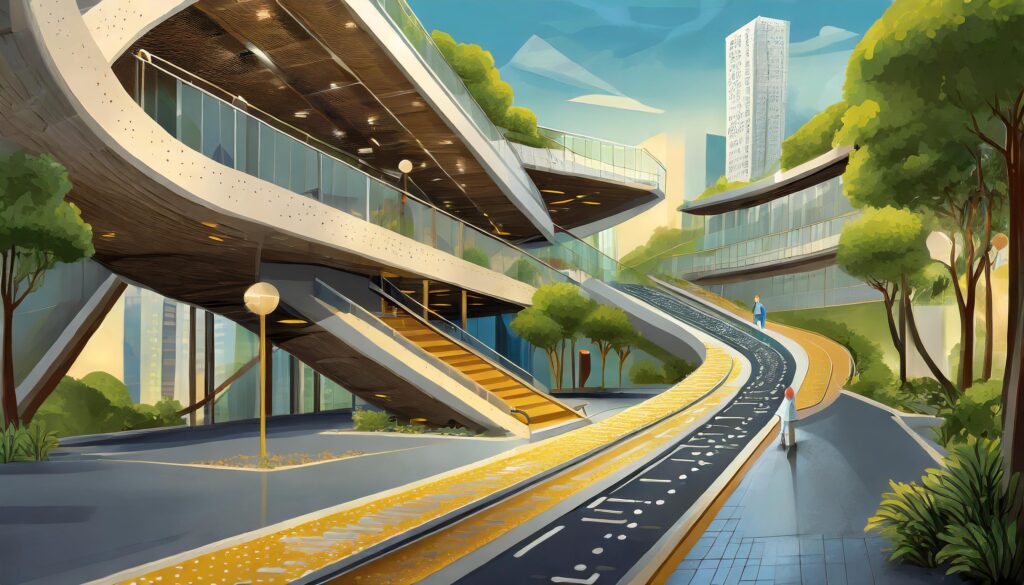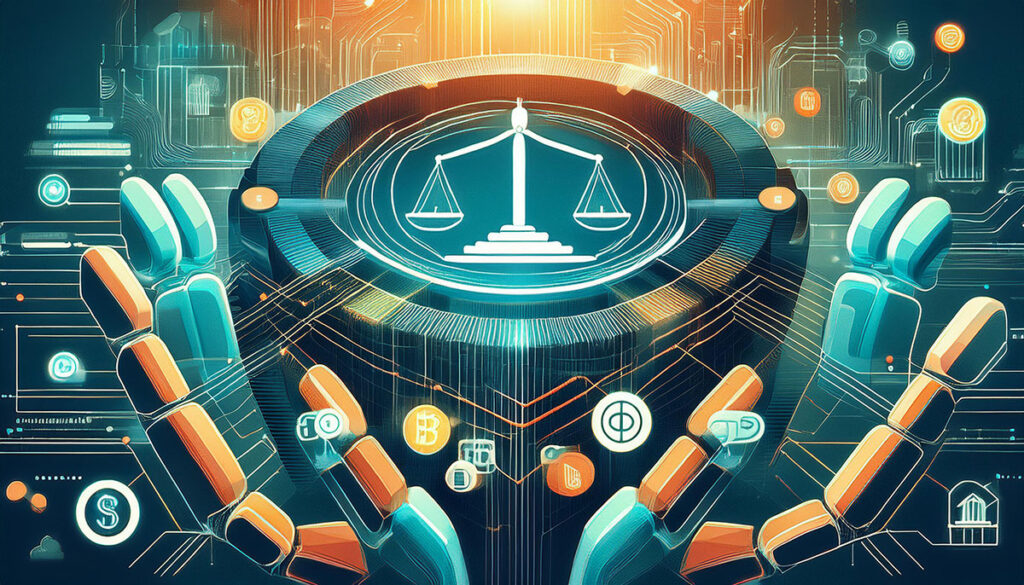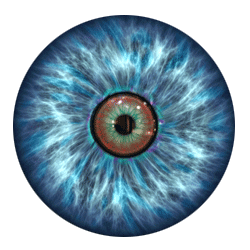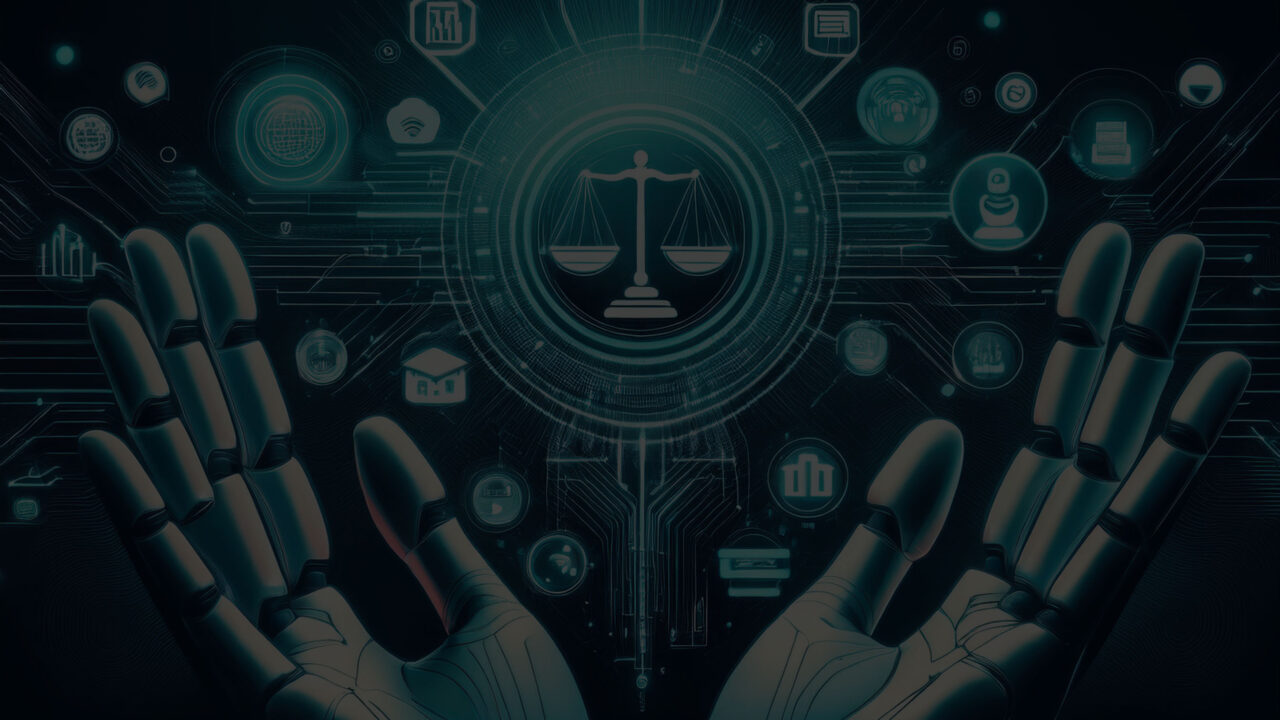Want to listen to the podcast discussion of this article?
October 2024 | Matthew Mondzelewski, CUA
12-30 min. read
Quite a Pickle
Web Content Accessibility and Inclusive Design
HOW CAN WE RECONNECT?
Within the bustling traffic of the internet, there are nearly 5.38 billion indexed web pages, most of which are inactive and outdated. The active 400 million websites represent a vast amount of content, including billions of pages on products, services, government, news, social media, and more. Shockingly, approximately 90% of websites remain inaccessible to individuals with disabilities who rely on assistive technology.
Web content accessibility isn’t a new concept. In 1994, Tim Berners-Lee first mentioned web accessibility in his keynote speech at the second international World Wide Web conference in Chicago. In 1999, the WCAG released the first version of their Web Content Accessibility Guidelines.
Now, twenty-five years later, we’ve strayed from the original intent of the World Wide Web. Our economic foundation depends on an ecosystem that needs significant reform. Our lives increasingly revolve around the web, relying on websites for essential services. We are intertwined in a system of business, politics, and personal data, with a rapidly growing relationship between human input and collaboration with Artificial Intelligence.
So how did 90% -essentially stuff themselves into a tight jar of inaccessible pickles?

The Power of Inaccessibility
15% of disabled individuals say they never go online.
Pew Research Center - 2024 Report
In 2023, Utah State University’s Web AIM Project reported that 96% of the top one million homepages did not comply with ADA standards.
In 2024, Ovum’s WCAG 2.1 audit of every Fortune 100 corporate website found 815,600 issues, most of which were level A, not meeting the minimum standard. Additionally, 70% of government, news, and e-commerce websites are inaccessible to vision-impaired users. Consequently, marginalized users either give up or persevere and create solutions. Let’s explore the factors influencing this.
The Factors That Influence It

TIME and MONEY
With the cost of making existing websites accessible ranging from $6k-100k+, the ROI is a barrier. Beyond the dollars, think about the impact. Accessible websites mean more users who can now engage with content, buy products, and participate. Plus, recognizing and removing barriers is the right thing to do. Imagine if the internet were a physical space: We can’t build a public library with stairs but no ramps, right? Same logic applies here.
COmplexity
Bells and whistles. The more twists, turns, and secret passages a website has, the more effort it takes to make it accessible. Dynamic content? Animations? Custom forms? All these add to the bill.
Existing Code Base
The manual remediation process often involves a bit – or a lot – of untangling. Newer, cleaner code? A complete transformation, or re-code? Less fuss, more focus on accessibility.
Volume of Content and DATA
How many pages, images, videos, and cat memes does your site contain? Each one needs its own dose of accessibility love.
Testing and Audits
Automated tools catch some issues, but manual testing by accessibility experts is where the real magic happens. That expertise doesn’t come free. Most owners take the scenic route. They start with automated testing (like a quick health check) and then dive deeper. It’s like renovating a house room by room.
OnGoing Maintenance
Accessibility isn’t a one-time thing. It’s like watering a digital plant—you need to keep nurturing it. So factor in ongoing costs.
The Factors That Influence Change

USERS ARE NOT ONLY CUSTOMERS
Business cases are unique. As organizations create inclusion plans, project managers typically prioritize accessibility to reach 1.3 billion potential new customers. That’s nice. But UX must consider diverse users with different motivations. Users also want to create and use information and software. We need to dig deeper into the abilities that humans possess, and consider the process of creation, and performing tasks and roles with purposes other than simply being a customer.
ENVIRONMENT
Accessing data and content from the internet can be done in many ways. We have to reach out and reconnect in new places and settings. Take advantage of IoT, ubiquitous computing, and devices that provide physical, sensory, and cognitive access to interfaces and information. Individuals with limited mobility can operate these devices using voice commands or accessible interfaces. Providing multiple sensory cues, such as haptic vibrations, or visual alerts ensures users receive critical information regardless of sensory abilities. Avoiding clutter, using plain language, and providing customizable settings enhance cognitive accessibility. How exactly do we expect users to communicate with our content and data?
PRIVACY and DATA COLLECTION
Devices collect tons of data from users. Data-driven personalization can enhance user experiences for everyone, and we all want to balance our privacy with critical services. For example, ensuring transparent data practices and user consent for IoT health devices that track vital signs will benefit individuals with chronic conditions.
Cross-sector collaboration
When IoT manufacturers, accessibility experts, and disability communities co-design where accessibility is integral from the start, it provides diverse perspectives, which leads to better solutions.
Why it Matters

OPPORTUNITIES
More inclusion = Higher numbers of participants = Ensures equal access to information and services = Increased opportunities. Owners must decide to remove barriers, or re-think fresh design solutions to level the playing fields.
Equal Access:
Inaccessible websites deny people with disabilities equal access to information. This hinders participation and engagement. It truly comes down to bridging the gaps, making sure connections can be made. Especially in critical areas like family, health, career, finance, education, sprituality, social etc.
HEALTH and safety
Having a disability is hard. It fundamentally means overcoming challenges in daily life. We all need access to quality healthcare, emergency services, news, government services, and e-commerce. If we don’t design accessible content for critical sectors, we pose greater risks.
In the US, one in four are disabled. The most common challenges include mobility, cognition, hearing, vision, and independent living challenges.
Centers for Disease Control
Architecture, Planning and Design
CONNECT IN SPACE
The ADA provides guidance to planners, architects, engineers, and others responsible for constructing our physical experience. In order to connect people with data and solutions, we must continue efforts that promote mobility, and interactions with our infrastructure.

ArchDaily has over 10,000 results of how we pay attention to modern solutions in physical space.
Assisting The User Experience
Why Assistive Technologies Matter
This is probably the most important topic. People rely on various tools—screen readers, captions, voice recognition—to navigate the web.
According to the World Health Organization, 16% of the global population perform daily tasks with a disability. That’s nearly 1.3 billion people. Brace yourself: By 2030, over 3.5 billion will need assistive technology. Our aging population and the rise of noncommunicable diseases propel this massive demand. But fear not; designers are weaving accessibility and AI into the fabric of tech.
New Mobility
NEUROLOGICAL MARVELS
As we advance in medicine to address tremors associated with Parkinson’s, GyroGear is engineering assistance to offer enhanced mobility. Imagine a gyroscope-fueled glove that steadies trembling hands, like a lead dance partner countering Parkinson’s tremors. GyroGlove is already gliding through this space, making drawing and writing easier for those with essential tremors. It’s a pricey ticket at nearly $6,000, but its potential impact is amazing. Evidence suggests 90,000 people in the US are diagnosed with Parkinson’s disease (PD) each year.
HEALTHY SIDE OF THE BRAIN
Stroke victims, fear not! Neurolutions’ Ipsihand taps into brain waves, allowing the healthy part of the brain to control a disabled arm. It’s like telekinesis with a headset and an arm device. Expect this mind-bending tech to roll out in 2025.
ALS Warriors
Meet EarSwitch. It’s an earbud-like device that detects movements of the tensor tympani muscle (yes, the one you flex when you yawn). Tense that muscle, and an assistive screen scans letters and words.
Vision
Blindness
Globally, around 0.5% of both men and women experience blindness. This is roughly 39 million people.
Statista: 2020 Report
vision impairments
Approximately 55% of individuals with moderate or severe vision impairment globally were women, which amounts to roughly 163 million women. Among these women, 72% were aged 50 years and over. For men, approximately 132 million and 68% of them were aged 50 years and over.
According to Nucleus Research, 70% of government, news, and e-commerce websites are inaccessible to vision impaired users.
New Vision
Glasses with a Vision
Need sharper vision? ViXion’s lightweight glasses measure the distance to what you’re focusing on and adjust the lens accordingly. It’s like auto-focus for your eyes. Plus, it lasts up to 10 hours on a charge—perfect for all-day stargazing. Currently available in Japan, though not yet certified as a medical device.
enhancing Vision
Gentex’s eSight Go is like strapping augmented reality glasses to your face. It captures your environment through a camera, enhances it with software magic, and projects the result onto OLED displays in front of each eye. Launched in March 2024, it’s a cosmic upgrade for those with eye conditions like macular degeneration and diabetic retinopathy.
NAVIGATING THE COSMOS
For visually impaired wanderers, OOrion is your cosmic GPS. It’s a smartphone app that locates objects and text in your environment. Think of it as celestial wayfinding—no need for a star map!
USING GPT-4o
ChatGPT-4o uses the device’s camera to describe Andy Lane’s experience. #BeMyEyes
ADHD
Approximately 6.8% of adults worldwide -equivalent to 366.3 million individuals- experience symptomatic ADHD
Forbes, 2024
PAY ATTENTION TO ADHD
For individuals with ADHD, the internet can be overwhelming due to its sensory overload, constant stimuli, and rapid information flow. It’s also commonly overlooked in the design process.
HOW TO DESIGN FOR FOCUS
Presenting relevant information concisely is crucial. Modern AI tools can effectively provide structure and streamline tasks – which is good – if they’re designed with simplified displays, or alerts and reminders to help users stay on track. Thoughtful design, including AI design models, should enhance focus without overwhelming users, which is good design for everyone.
This has led to the rise of tools specifically designed for productivity. Mindmapping, Calendars, Workflows, Digital Timers, Notes, and Voice Assistants. See the top ten from ClickUp
The AI Opportunity

THE FUTURE
Ensuring that we all can effectively harness AI involves thoughtful design, collaboration, and a commitment to accessibility. Identifying potential barriers and designing an inclusive process will bridge the gaps toward equal access to information, but also the opportunities to create and contribute collectively.
INCLUSIVE DESIGN PROCESS
As we develop natural language models and their responses, we must consider preferences in communication styles and customize them ethically and openly. If we ensure the AI systems work with assistive technologies, include the people who use them, and stay informed, we can create experiences that solve challenges in entirely new places and methods.
ACCESSIBILITY IS A UNIVERSAL DESIGN PRINCIPLE
Next, we need to apply accessibility as a universal design principle. Especially when designing new modern AI interfaces. While progress is being made, there’s still significant work to do to achieve widespread ADA compliance across the web. If we prioritize accessibility with empathy, simplicity, flexibility, and understanding needs, we can lead change, one user story at a time.
The power of the Web is in its universality. Access by everyone regardless of disability is an essential aspect.”
"Underlying its whole infrastructure was the intention to allow for collaboration, foster compassion and generate creativity — what I term the 3 C’s"
Sir Timothy Berners-Lee
The Legal Landscape: ADA and Web Accessibility

Title II of the ADA
The Americans with Disabilities Act (ADA) mandates that state and local governments, as well as businesses open to the public, ensure web accessibility. The Department of Justice (DOJ) updated its regulations for Title II in April 2024.
The recent update emphasizes compliance with the Web Content Accessibility Guidelines (WCAG) 2.1 AA. Inaccessible websites can be as exclusionary as physical barriers, hindering access to government services, voting information, and community events.
WHY IT CAN"T BE IGNORED
- Legal Fees: Defending non-compliance in court can be costly. Attorney fees add up quickly.
- Civil Fines: Compliance is not just ethical; it’s a legal requirement.
- Reputation: Public perception matters. An inaccessible site can harm your brand’s reputation.


